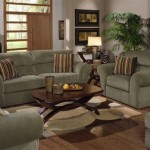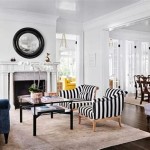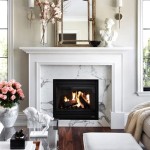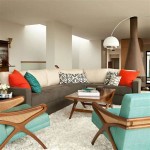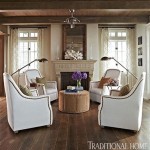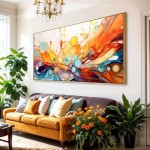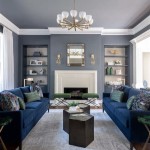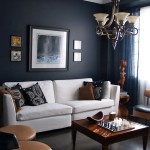Living Room and Dining Room Color Combinations
Creating a cohesive and stylish flow between the living room and dining room can be a delightful challenge, and color plays a crucial role in achieving this harmony. Choosing the right color combinations can enhance the aesthetic appeal, define spaces, and create an inviting ambiance. Whether you prefer a classic, modern, or eclectic style, understanding the principles of color theory and exploring various color palettes can guide you to achieve your desired look.
1. Creating Continuity with Neutral Bases
Neutral colors provide a versatile foundation for both living and dining areas, allowing for flexibility in introducing accent colors and furniture. A neutral base can encompass a range of shades, from warm whites to cool grays, and can be used on walls, furniture, and even flooring.
Consider using a soft gray on the walls of both rooms to create a sense of continuity, while integrating accents of warmth with wooden furniture and natural textures. This approach fosters a sense of calm and allows the accents and furniture to become the focal points. In the living room, a deep charcoal gray sofa can ground the space, while in the dining room, a statement chandelier with brass accents can add warmth and elegance.
2. Using Complementary Colors for Visual Interest
Complementary colors are situated opposite each other on the color wheel and create a vibrant contrast when used together. Employing this principle in your living and dining areas can inject personality and dynamism into the spaces.
For example, a rich teal green in the living room can be paired with a vibrant coral in the dining room. The teal green could be incorporated through an area rug, throw pillows, or artwork, while the coral may show up in dining chairs, a statement vase, or a decorative bowl. The contrast will draw the eye and provide a visual connection between the two spaces.
3. Balancing Light and Dark Tones
Balancing light and dark tones can create a harmonious and sophisticated ambiance in connected living and dining spaces. Consider using darker tones in one room to provide a sense of intimacy, while using lighter tones in the adjacent room to create a sense of spaciousness.
For instance, using a deep navy blue in the dining room can provide a dramatic backdrop for a formal dining setting, while a light beige or cream in the living room can foster a relaxed and airy atmosphere. This balance of light and dark tones creates visual interest and adds depth to the overall design.
Incorporate lighter tones in furniture like a white sofa or a pale rug in the living room to complement the darker dining room. This creates a sense of flow and visual balance between the two spaces.
4. Highlighting Architectural Features
Color can be strategically employed to highlight architectural features, such as crown molding, fireplaces, or built-in bookshelves. Utilizing a contrasting color on these architectural details can draw attention to them and enhance the overall design.
In the living room, a warm beige or tan on the walls could be complemented by a dark brown trim on the fireplace mantel or built-in bookshelves. This creates a visually appealing contrast and adds architectural interest to the space. Similarly, the dining room could utilize a lighter shade of the same color for the walls, allowing the crown molding to stand out.
Incorporate accents of the same color in furniture or accessories in both rooms, such as a brown leather sofa in the living room and brown dining chairs in the dining room, to further emphasize the connection between the two spaces.
5. Creating a Sense of Mood
Color has a profound impact on mood and ambiance. Consider the desired atmosphere you want to create in your living and dining areas when choosing your color palettes.
For a relaxed and inviting ambiance, opt for warm and earthy tones such as beige, cream, or soft yellow. These colors can create a sense of warmth and comfort. In the living room, incorporate a warm beige on the walls and a cream-colored sofa to foster a feeling of relaxation. In the dining room, incorporate a warm yellow accent on the walls or through decorative elements to create a cheerful and inviting atmosphere.
For a more dramatic and sophisticated atmosphere, consider using deeper tones such as navy blue, emerald green, or burgundy. These colors can create a sense of luxury and intrigue. In the living room, incorporate a deep navy blue on the walls and a black sofa to create a sophisticated and dramatic ambiance. In the dining room, introduce an emerald green accent through dining chairs or decorative elements to add elegance and depth to the space.

A Guide To Dining Room Colour Combinations Design Cafe

A Guide To Dining Room Colour Combinations Design Cafe

Living Room Dining Combo Ideas With Tricks Doğtaş

A Guide To Dining Room Colour Combinations Design Cafe

Paint Advice How To Adjoining Living Room And Dining

A Guide To Dining Room Colour Combinations Design Cafe

Modern Living Room And Dining Decorating Color Schemes With Blue Wall Paint Colors

15 Dining Room Color Ideas For Your Home

36 Best Dining Room Paint Colors Color Schemes For Rooms

Soothing Color Palettes Lilu S Look Of The Day Www Liluinteriors Com Dining Room Colour Schemes Colors Living

